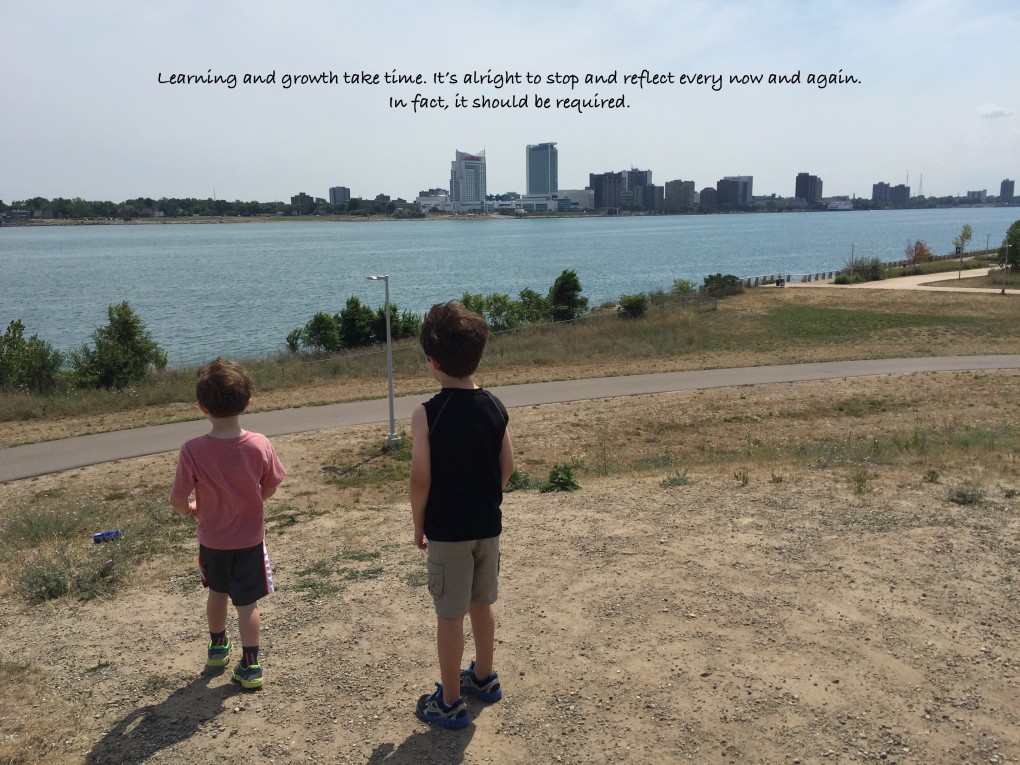And I Quote: A 3-Part Structure For Reflective Professional Learning
Teachers and administrators are constantly searching for the best ways to design, promote, and maintain school cultures in which meaningful, connected, and operational professional learning is supported, nurtured, and celebrated as the norm. Collaboration is coveted as among the most important components of such learning. Autonomy and choice are also revered among adult learners in school communities. Teachers want to have a voice in deciding what makes sense as a pathway to progress in their classrooms and schools, they want to be a part of forward thinking and cooperative teams, and they want to be recognized and trusted as experts when it comes to the wellbeing and achievement of the students they serve; and rightfully so, because after all, they are.
It is widely recognized that school communities are fast-paced places, regularly inundated with demands that would seek to subvert otherwise-established priority preferences and cause time itself to appear the enemy of progress. Camburn suggests that being able to “try out, mull over, and critically evaluate new practices” affords adult learners opportunities to, “make them their own (p. 463).” How can we arrange for time to try out, mull over, and critically evaluate anything when there’s so much coming at us at such a frenetic pace?
Integrated reflective systems and strategies have the power to offer structure and consistency to professional learning models focused on the real-time, collaborative, learner-centric, growth and enrichment regarding best practices in instruction, social-emotional development, an partnership-driven communication between stakeholders in school communities. In separating the three components of Camburn’s suggestion we can define reflective learning practice in a concise way, thereby creating scaffolding for professional learning on the range of topics that will no doubt surface during the course of a school year.
Regardless of subject matter or theme, a “trying out” opportunity can be provided in connection to learning at each turn. Those facilitating professional learning in schools can make clear that learners will have a chance to put their connected thoughts and ideas into action, and that the chance to do so should be understood as an overt aspect of the learning process. While potentially contrived, role-play provides an immediate opportunity for trying things out, whereas a mandate to pilot and/or explore learned content bridges a long term, episodic learning structure. Either have their benefit to reflective practice, and both have potential pitfalls.
“Mulling over” can be done across a wide range of approaches. This phase is arguably enhanced by some degree of independence, as learners tend to need space to process new concepts, ideas, and practices internally before being able to effectively communicate about them with others. The key is recognizing each of the three components of Camburn’s suggestions an explicit piece of reflective learning, and to clearly emphasize reflection is the foundation of authentic processing.
An emphasis on each component and on reflection itself communicates to learners that each is important, and it gives them permission to exercise patience throughout the learning process. When facilitators of professional learning highlight reflection and its parts as a priority they expressly suggest a value for long-term, sustainable practices to.
“Critical evaluation” as a third point in the learning process is also the most collaborative. Moving through “trying out” new practices as connected to new learning and “mulling over” the experience leads naturally to a “critical evaluation” of next steps. Doing so in collaboration with colleagues initiates ongoing partnerships, feeds a culture of connectedness, and drives further learning between professional peers and teams of teachers.
What from the learning can be incorporated into ongoing practice and how will consequent augmented practice impact student learning? What data will be collected to consistently evaluate the connected instruction and in what time frame will it again be considered for the possibility of further augmentation? How can the new learning enhance best practices instruction for groups of students? How can it do the same for individuals? In what ways will these shifts in practice be communicated with parents? In what ways will they be communicated with students?
In his three-part suggestion Camburn doesn’t prescribe specific methodology for reflective practice in professional learning. He simply outlines a foundation that speaks to the need for effective cultures of collaboration in which teachers are valued as experts, partners, and leaders, and one that identifies reflection as a potential pathway to slowing down and isolating a process that we know is enhanced by attention to detail and patient consideration. Facilitators of professional learning in school communities can utilize Camburn’s three-part suggestion to simplify and clarify the process for the learners they serve, and to give unambiguous permission to adult learners to manage their time in ways that genuine learning, growth, and progress demand.
Live. Love. Listen. Learn. Lead. Thanks.
*The foundation of this “And I Quote” post is an article by Eric M. Camburn of the University of Wisconsin-Madison entitled “Embedded Teacher Learning Opportunities as a Site for Reflective Practice: An Exploratory Study,” published in 2010 in the American Journal of Education.
